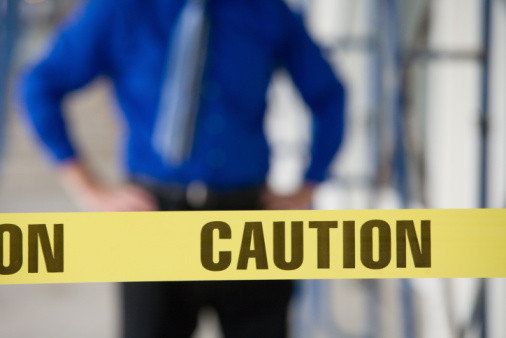
Cookouts, visits to the beach and camp for the kids are all a part of the summertime allure. But there is a dark side to all that sunshine and leisure: crime. According to the Federal Investigations Bureau, crime rates increase by around 10 percent, with murders rising 16 percent and other violent crimes around 13 percent during the summer months.
And that's for the nation as a whole. For cities, the increase is more striking; whereas 10 murders occurred last year in Newark in the months of January, February and March, a total of 35 murders occurred in June, July and August -- a 350-percent increase.
This is no new phenomenon. In 1897, Willis L. Moore, chief of the United States Weather Bureau, commissioned a study of the relationship between crime and weather, already convinced of the "connection between atmospheric conditions and the physical and moral welfare of the people."
And in 1935, J. Edgar Hoover, the head of the Division of Investigation, was quoted as saying, "Compilations for the past several years indicate that offenses of murder and aggravated assault are more frequently committed in the hot summer months..."
The culprit? Speculation points to the obvious: both victims and perpetrators are outside more during the summer. Simple. Add to the equation the urban realities of youth with no viable summer plans, concentrated joblessness and gang activity, and you've got a recipe for disaster.
Fortunately, most large cities have devised some type of coordinated initiative to target the increase in summertime crime.
Take Newark, N.J. During his first summer in office, Newark Mayor Cory Booker took an aggressive stance toward crime, designating some of the city's most notorious crime areas as safety zones and saturating them with activities and services. Job fairs, summer camps, movie nights, midnight basketball and campouts in some of the city's most dangerous housing projects are just some of what was offered that year.
Now in its sixth year, Super Summer 2011 has grown in depth and scope. This summer's plan is to target Newark's most crime-prone areas, connecting residents of all ages with services and summer activities. Police patrols will be heightened, abandoned houses and lots will be identified and addressed, curfews will be enforced and a mobile unit staffed with representatives from Newark Now, the Police and Fire Departments, Neighborhood Services and the Health Department will be dispatched to each of the designated areas to help keep residents engaged and active.
"Prevention" and "collaboration" seem to be the name of the game, and it's not entirely new. In 1989, during the height of the Reagan Era, The New York Times ran an article about how various cities dealt with summer crime increases. Believe it or not, some cities were already supplementing harsher policing tactics and drug crackdowns with activities designed to keep youth engaged and out of trouble.
Today, these tactics are being employed not only in Newark but in large cities across the country. This summer in D.C., officials have designated five police service areas to be targeted with enhanced police patrols and partnerships between the Department of Justice, the U.S. Attorney's Office, the D.C. Department of Parks and Recreation, the D.C. Housing Authority, and a variety of non-profit and private organizations.
In Indianapolis, the Police Department has launched a new Community Affairs unit to establish and maintain community partnerships. The officers involved will be trained and tasked with conflict resolution, youth development, intervention and prevention measures, crisis response and problem-solving policing.
And in Chicago, Mayor Rahm Emanuel and Cook County Board President Toni Preckwinkle recently announced plans to offer more summer programs for kids, employing partnerships between the City, County and local businesses and funding from private foundations. Officials estimate that at least 2,000 additional kids will take part in summer programs this year.
How effective these initiatives are is a matter of debate, though we may have a more concrete understanding after the University of Chicago's Crime Lab evaluates the results of Chicago's summer program this year.
Whatever the outcome of their study, the concerted meeting of minds between non-profits, government organizations, businesses and police to offer resources in underserved communities is itself a significant positive outcome. And the fact that government officials seem to understand and accept this is a sign of more holistic crime prevention trends.
Who knows -- as our society evolves in its understanding of what factors lead to crime and begins to validate the connection between a lack of resources and an increase in criminal alternatives, we could see more collaboration, cooperation and prevention, even after the chill starts creeping back into the air.